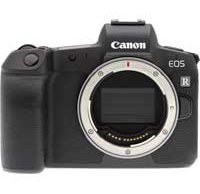Canon EOS R Field Test Part I: Canon starts new full-frame mirrorless system off on the right foot
posted Thursday, September 27, 2018 at 9:15 AM EDT
Click here to read my Canon EOS R Field Test

Earlier this month, Canon unveiled the Canon EOS R, which is the first camera in a new full-frame mirrorless system, complete with a new lens mount and a quartet of exciting new RF lenses. For my Field Test, I spent time with the EOS R and two of the new lenses, the RF 24-105mm f/4 L IS USM, which is the new kit lens, and the RF 50mm f/1.2 L USM. The new lenses proved to be excellent in their own right, but particularly nice when paired with the compact, lightweight EOS R camera.
The first thing I noticed when I picked up the EOS R was how much more compact it was than a Canon 6D Mark II or Canon 5D Mark IV. However, there are some similarities in how the camera feels and operates. With less space on the body, some physical controls have been changed or eliminated entirely – which has some negative impacts on usability in the field – but there remains a very Canon feel to the camera. The new electronic viewfinder and rear touchscreen display are two highlights of the camera's design and usability as well.

Image quality didn't blow me away, but the EOS R retains a classic Canon look and does a great job of producing high-quality images straight from the camera. That the images have a familiar look shouldn't be surprising, as the EOS R employs a similar 30-megapixel sensor as in the Canon 5D Mark IV. However, it is not exactly the same, as the EOS R utilizes an updated Dual Pixel CMOS AF system, which has on offer over 5,500 autofocus points and covers nearly the entire full-frame image area. Focus accuracy and speeds proved impressive, even in low-light shooting scenarios. Overall performance was something of a mixed bag, however, due to somewhat lackluster shooting speeds.
For my full take on the Canon EOS R, head over to my Field Test. Stay tuned to Imaging Resource for much more on the Canon EOS R, including image quality analysis and performance measurements from our lab and additional Field Test coverage from my colleagues.